Microsoft: prima XBox graficamente superiore a Nintendo Wii

Robbie Bach, presidente della divisione entertainment di Microsoft, lancia questa provocazione. Subito il responso di alcuni sviluppatori.
di Rosario Grasso pubblicata il 14 Maggio 2007, alle 15:00 nel canale VideogamesMicrosoftXboxNintendo










 Microsoft Surface Pro 12 è il 2 in 1 più compatto e silenzioso
Microsoft Surface Pro 12 è il 2 in 1 più compatto e silenzioso Recensione REDMAGIC Astra Gaming Tablet: che spettacolo di tablet!
Recensione REDMAGIC Astra Gaming Tablet: che spettacolo di tablet!  Dopo un mese, e 50 foto, cosa abbiamo capito della nuova Nintendo Switch 2
Dopo un mese, e 50 foto, cosa abbiamo capito della nuova Nintendo Switch 2 Driver più sicuri: Microsoft alza l'asticella con i requisiti per Windows 11 25H2
Driver più sicuri: Microsoft alza l'asticella con i requisiti per Windows 11 25H2  Ego Power+ ha la giusta accoppiata per la pulizia a batteria: prova aspiratutto e idropulitrice
Ego Power+ ha la giusta accoppiata per la pulizia a batteria: prova aspiratutto e idropulitrice Scompiglio nei listini Amazon: prezzi impossibili per TV OLED, Amazfit GTR 3 (69), drone DJI 159, robot e altre assurdità
Scompiglio nei listini Amazon: prezzi impossibili per TV OLED, Amazfit GTR 3 (69), drone DJI 159, robot e altre assurdità Sotto i 105 il robot Lefant che lava, aspira, mappa e obbedisce ad Alexa: ecco perch้ ่ un'offerta da non perdere
Sotto i 105 il robot Lefant che lava, aspira, mappa e obbedisce ad Alexa: ecco perch้ ่ un'offerta da non perdere Mini proiettori smart in offerta: uno costa solo 71, l'altro con base girevole a 360° e audio 3D a 99! Ecco le differenze
Mini proiettori smart in offerta: uno costa solo 71, l'altro con base girevole a 360° e audio 3D a 99! Ecco le differenze Smartwatch Amazfit in offerta: Balance oggi a 139, ma il vero affare ่ GTR 3 con cassa da 46mm a 69
Smartwatch Amazfit in offerta: Balance oggi a 139, ma il vero affare ่ GTR 3 con cassa da 46mm a 69 Windows XP ritorna: ecco come usarlo subito sul tuo PC e tornare ai primi anni 2000
Windows XP ritorna: ecco come usarlo subito sul tuo PC e tornare ai primi anni 2000 Arrow Lake in saldo: Intel taglia i prezzi dei Core Ultra 5 225 e 225F
Arrow Lake in saldo: Intel taglia i prezzi dei Core Ultra 5 225 e 225F LG C4 da 55'' a 899 è il top per qualità video, ma occhio anche all'OLED Hisense, sempre da 55'', a 699 e ai QNED in sconto
LG C4 da 55'' a 899 è il top per qualità video, ma occhio anche all'OLED Hisense, sempre da 55'', a 699 e ai QNED in sconto DJI Neo a 159 è il mini drone perfetto per i video 4K: facile da usare, decolla dalla mano e vola senza radiocomando
DJI Neo a 159 è il mini drone perfetto per i video 4K: facile da usare, decolla dalla mano e vola senza radiocomando Robot aspirapolvere DREAME D10 Plus Gen 2: a 199 pulisce casa per 90 giorni senza che tu muova un dito
Robot aspirapolvere DREAME D10 Plus Gen 2: a 199 pulisce casa per 90 giorni senza che tu muova un dito A 109 ha costretto Amazon a nuove scorte in soli 2 giorni: la scopa elettrica bestseller, con la rivale più potente, piace proprio a tutti
A 109 ha costretto Amazon a nuove scorte in soli 2 giorni: la scopa elettrica bestseller, con la rivale più potente, piace proprio a tutti Sbaraglia la concorrenza Intel, questo mini PC: Ryzen 5 3550H, 16GB di RAM e SSD da 512GB a 169,99
Sbaraglia la concorrenza Intel, questo mini PC: Ryzen 5 3550H, 16GB di RAM e SSD da 512GB a 169,99 Giappone all'attacco: ecco il primo wafer a 2nm che fa tremare Taiwan
Giappone all'attacco: ecco il primo wafer a 2nm che fa tremare Taiwan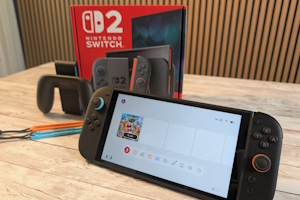


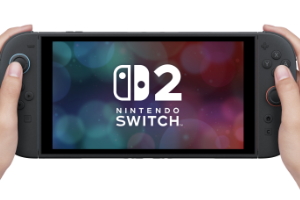
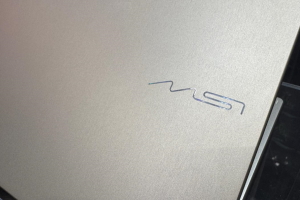
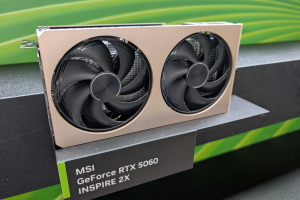








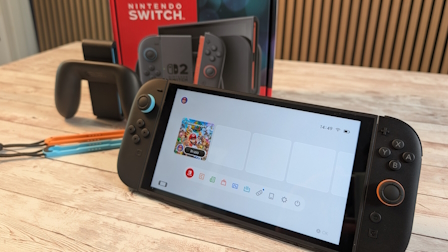






164 Commenti
Gli autori dei commenti, e non la redazione, sono responsabili dei contenuti da loro inseriti - infoDefinizione di gamers seri please!
E' colui che avvia la console per divertirsi.
E' colui che avvia la console per sessioni di ore.
....ect.
Definire gamers seri per cortesia.
Perchè Imho è un giocatore serio il padre di famiglia che accende la propria console e farsi 4 risate magari con la moglie/figlio/figlia o chicchesia....per divertisi.
la mia ragazza lo adora.
PPC Benchmarks for the Wii Cpu under Linux compared to the X360 and PS3 Cpu's... Infact I find it kinda funny that the Wii CPU is almost Equal to a Single Core of the the X360... Also the Wii GPU has about 1/3 the Cache of the X360... See a Trend?!? 1/3 seems to be a Magic Number when comparing Wii and X360... Don't take this to mean the x360 is 3 Times the Power of the Wii, as it's Not... The X360 is roughly 2 - 2.5 the Speed of the Wii overall... The PS3 is roughly the same as the x360 Benchmark wise, however It gets Insane Scores at Floating point Math due to the SPE units... Overall to compare the X360 CPU and PS3 CPU to a Computer I'd say roughly a 3.2Ghz Intel P4 (Non-DualCore)... The Wii is some where in the 2.4 - 2.6Ghz Intel P4 (Non-DualCore) Range...GPU benchmarks are being worked on but as so little is really known for the 3 GPU's in question I doubt the numbers will be accurate enough to be useful...Basically the PS3 is the Most Powerful but only if you program for the SPE's and that is Rather Hard...The X360 is Second, but once again you need to program for a 3 Core CPU (granted it's easier then Sony)...Finally the Wii, It's simple Single Core design with High Memory bandwidth and just enough ram to keeps things running smoothly... Over all a great machine, but just not what some people wanted...I feel the Wii is what is know as a "Lead-In Product"... That means it's breaks new ground in a Radical Fashion but can still fall back to a normal if needed (ie: the WiiMote is not required for all Games)... This is why there was no HUGE Leap in other Hardware... If the Wii had Failed, The loss due to Hardware heavy machine could have been very bad for Nintendo... However, now that we can see the Market is accepting the WiiMote, the Next Nintendo Console will include a Revised Version if it and also the Beefed Up CPU and GPU the others have wanted... The DS is a Lead-In Product, we have yet to see what Nintendo has learned from it though... Of course not all products of this Type do well (ie: VirtualBoy)...
Tell me about the dev kit…
Basically it had plenty of Hardware info like the Memory Layouts for the GPU... We already knew that the 3 Megs was split into 2 Sections (Frame Buffer 2 Megs and Texture Cache 1Meg)Gpu and CPU can Copy it's contents to the 24 Megs Ram and Vice Versa, allowing for extended Graphics RAM or Texture Caching (and people wondered why 24 Megs of 1T-SRAM was On Chip)...Wii Dev kits have 128Megs instead of 64Megs of GDDR3 as Main Ram...Interesting Note: Inorder to make certain games Ran Smoothly in Finally Revision GC Dev Kits ran a Slower MHz then the Retail GC... 350~ compared to 485MHz...Even more Interesting : Mario Galaxy "Live Demo" that was Shown at E3 was run on a Modified GameCube, NOT Revolution Hardware at all... Expect something BIG from this Title...(Editor Note: this interview was done before the newer Galaxy trailer was shown)The "Re-Birth" Demo is given in here as example Code and it is ONLY 32 Megs in Size for the REAL TIME Rendered Version...
So why do wii dev kits have 128MB's instead of 64?
It's breathing Room... It gives them room to make some pretty sloppy code and test it before trimming it down to fit the 64Megs of the Retail Unit... Uncompressed textures and Sound could also be used in testing...The GC Kits where very restrictive as they had less power then the retail, Nintendo fixed that this time around...
I read somewhere than the 750 CL could go as high as 1.1 ghz... so what is broadway clocked at?
Software Clocked at 729 MHz via the Bios.
So what can you tell me about the TEV unit in the Wii? Does it have any addition pipelines? Vertex shader support?
TEV is Basicly the Same... The GPU has twice the Pipelines now at 8... Tev makes up for this by allowing 16 Texturing Stages per Pipeline... Vertex Shader routines are handled by Tev just like Pixel Shader routines are...
Do you know for a fact that it(hollywood) now has 8 pipelines or are you going by the #@#%nintendo interview?
FACT, it's listed in the SDK.
Any other Hollywood GPU tidbits you can tell me?
GC GPU to Wii GPU
162 MHz Clk to.... 243 MHz Clk ( 50 % Increase in Clk Speed )
3 Megs embedded Ram Same ( Wii able to use A-Ram as Additional
GPU/CPU Ram )
18-Bit color Used to avoid Frame Drops to.... 32-Bit Color Used at all times
4 Pixel Pipelines to.... 8 Pixel Pipelines
4 Texture Pipe (16 Stages Each) to.... 8 Texture Pipelines (16 Stages Each)
Resolution is Restricted in the SDK not in the Hardware...
Those are the Basics...
You can see where this would be 3-5 Times more powerful then the Normal GC GPU..
Cool. So how fast is the 64MB of GDDR in the Wii and has the 24MB of 1t-sram seen an increase in speed as well?
That's interesting in itself... Some GameCube programs rely on the Clock to a a Certain Ratio... The Gamecube CPU is 3 times the Clock of the GPU... GPU Clk is = to the Front Side Bus... Memory is Clk 2 times the GPU Speed...486 CPU 364 RAM 162 GPUThe Wii would be as Follows...729 CPU 486 RAM 243 GPU (ARAM would be at 243 also)As you can tell it's a Formula that they use and it seems to work well
So what can you tell me about the TEV unit in the Wii? Does is it dramatically different from the TEV in the GC? Vertex shader support?
TEV is Basicly the Same... The GPU has twice the Pipelines now at 8... Tev makes up for this by allowing 16 Texturing Stages per Pipeline... Vectex Shader routines are handled by Tev just like Pixel Shader routines are.
So does the file disclose any of the GPU's performance numbers?Gflops? Polygons per second? Fill rate? Stuff like that?
Only in a round about way... It gives you test code to run and shows some optimizations that can be added...The Code is run via Debuggers Cable or Wireless Network (Wireless requires a Special Disc in the Wii)...
But you can do the math. 8 pipelines at 243mhz… that’s about 1944 megapixels per second. That’s a lot higher than the GC could handle and around twice what the xbox was dishing out.
Hmmm.. this must have been what Julian from Factor 5 meant when he said the Wii had an insane filtrate.. well compared to the Gamecube.
Exactly.
Il NES aveva una CPU NETTAMENTE superiore al MasterSystem, graficamente qualcosa meno, e un audio NETTAMENTE inferiore.
Il SuperNintendo aveva grafica e sonoro NETTAMENTE superiori al Megadrive, e la CPU inferiore (ma non c'era un enorme divario).
Solo il NeoGeo era una "razza" a parte: grafica e sonoro mostruosi, ma la console costava un occhio e le cartucce quanto la console.
Il N64 aveva un hardware nettamente superiore a Saturn e PSX. Il Saturn aveva una sezione 2D migliore, e la PSX il chip MDEC per i filmati MPEG compressi, ma per il resto il N64 era decisamente superiore.
Il GC era complessivamente superiore alla PS2, e inferiore alla XBox.
E' soltanto col Wii che Nintendo ha fatto marcia indietro sulle specifiche hardware, perché è dai tempi del NES che è stata un punto di riferimento.
Mmmmm non sono sicuro che il nes sia stato più potente del master system e graficamente c'era un grosso divario a favore di sega, il snes contro il megadrive in grafica e sonoro è vero, era superiore ma è anche uscito un anno dopo e per quanto riguarda il n64 se non sbaglio è uscito a cavallo tra il saturn e il dreamcast, superiore ad uno ed inferiore all'altro....
Il game gear rullava di brutto, una grafica del genere l'hanno raggiunta (e superata) solo con il gba e ne sono passati di anni....
A me sembra, a partire dal nes, che ci sia stato sempre qualcuno che sfornava potenza superiore ai nintendo ma ciò non è mai stato un problema per loro perchè con qualche genialata se la sono sempre cavata alla grande....
Il NES aveva una CPU NETTAMENTE superiore al MasterSystem, graficamente qualcosa meno, e un audio NETTAMENTE inferiore.
Il SuperNintendo aveva grafica e sonoro NETTAMENTE superiori al Megadrive, e la CPU inferiore (ma non c'era un enorme divario).
Solo il NeoGeo era una "razza" a parte: grafica e sonoro mostruosi, ma la console costava un occhio e le cartucce quanto la console.
Il N64 aveva un hardware nettamente superiore a Saturn e PSX. Il Saturn aveva una sezione 2D migliore, e la PSX il chip MDEC per i filmati MPEG compressi, ma per il resto il N64 era decisamente superiore.
Il GC era complessivamente superiore alla PS2, e inferiore alla XBox.
E' soltanto col Wii che Nintendo ha fatto marcia indietro sulle specifiche hardware, perché è dai tempi del NES che è stata un punto di riferimento.
Mmmmm non sono sicuro che il nes sia stato più potente del master system e graficamente c'era un grosso divario a favore di sega, il snes contro il megadrive in grafica e sonoro è vero, era superiore ma è anche uscito un anno dopo e per quanto riguarda il n64 se non sbaglio è uscito a cavallo tra il saturn e il dreamcast, superiore ad uno ed inferiore all'altro....
Il game gear rullava di brutto, una grafica del genere l'hanno raggiunta (e superata) solo con il gba e ne sono passati di anni....
A me sembra, a partire dal nes, che ci sia stato sempre qualcuno che sfornava potenza superiore ai nintendo ma ciò non è mai stato un problema per loro perchè con qualche genialata se la sono sempre cavata alla grande....
[QUOTE=cdimauro]L'hardware è proprio quello. Soltanto un po' potenziato, anche se il 50% è comunque abbastanza rilevante, e il Wii farà vedere senz'altro qualcosa di meglio rispetto al GC.
Il NES aveva una CPU NETTAMENTE superiore al MasterSystem, graficamente qualcosa meno, e un audio NETTAMENTE inferiore.
Il SuperNintendo aveva grafica e sonoro NETTAMENTE superiori al Megadrive, e la CPU inferiore (ma non c'era un enorme divario).
Solo il NeoGeo era una "razza" a parte: grafica e sonoro mostruosi, ma la console costava un occhio e le cartucce quanto la console.
Il N64 aveva un hardware nettamente superiore a Saturn e PSX. Il Saturn aveva una sezione 2D migliore, e la PSX il chip MDEC per i filmati MPEG compressi, ma per il resto il N64 era decisamente superiore.
Il GC era complessivamente superiore alla PS2, e inferiore alla XBox.
E' soltanto col Wii che Nintendo ha fatto marcia indietro sulle specifiche hardware, perché è dai tempi del NES che è stata un punto di riferimento.
Mmmmm non sono sicuro che il nes sia stato più potente del master system e graficamente c'era un grosso divario a favore di sega, il snes contro il megadrive in grafica e sonoro è vero, era superiore ma è anche uscito un anno dopo e per quanto riguarda il n64 se non sbaglio è uscito a cavallo tra il saturn e il dreamcast, superiore ad uno ed inferiore all'altro....
Il game gear rullava di brutto, una grafica del genere l'hanno raggiunta (e superata) solo con il gba e ne sono passati di anni....
A me sembra, a partire dal nes, che ci sia stato sempre qualcuno che sfornava potenza superiore ai nintendo ma ciò non è mai stato un problema per loro perchè con qualche genialata se la sono sempre cavata alla grande....
Il NES aveva una CPU NETTAMENTE superiore al MasterSystem, graficamente qualcosa meno, e un audio NETTAMENTE inferiore.
Il SuperNintendo aveva grafica e sonoro NETTAMENTE superiori al Megadrive, e la CPU inferiore (ma non c'era un enorme divario).
Solo il NeoGeo era una "razza" a parte: grafica e sonoro mostruosi, ma la console costava un occhio e le cartucce quanto la console.
Il N64 aveva un hardware nettamente superiore a Saturn e PSX. Il Saturn aveva una sezione 2D migliore, e la PSX il chip MDEC per i filmati MPEG compressi, ma per il resto il N64 era decisamente superiore.
Il GC era complessivamente superiore alla PS2, e inferiore alla XBox.
E' soltanto col Wii che Nintendo ha fatto marcia indietro sulle specifiche hardware, perché è dai tempi del NES che è stata un punto di riferimento.
Mmmmm non sono sicuro che il nes sia stato più potente del master system e graficamente c'era un grosso divario a favore di sega, il snes contro il megadrive in grafica e sonoro è vero, era superiore ma è anche uscito un anno dopo e per quanto riguarda il n64 se non sbaglio è uscito a cavallo tra il saturn e il dreamcast, superiore ad uno ed inferiore all'altro....
Il game gear rullava di brutto, una grafica del genere l'hanno raggiunta (e superata) solo con il gba e ne sono passati di anni....
A me sembra, a partire dal nes, che ci sia stato sempre qualcuno che sfornava potenza superiore ai nintendo ma ciò non è mai stato un problema per loro perchè con qualche genialata se la sono sempre cavata alla grande....
Il NES aveva una CPU NETTAMENTE superiore al MasterSystem, graficamente qualcosa meno, e un audio NETTAMENTE inferiore.
Il SuperNintendo aveva grafica e sonoro NETTAMENTE superiori al Megadrive, e la CPU inferiore (ma non c'era un enorme divario).
Solo il NeoGeo era una "razza" a parte: grafica e sonoro mostruosi, ma la console costava un occhio e le cartucce quanto la console.
Il N64 aveva un hardware nettamente superiore a Saturn e PSX. Il Saturn aveva una sezione 2D migliore, e la PSX il chip MDEC per i filmati MPEG compressi, ma per il resto il N64 era decisamente superiore.
Il GC era complessivamente superiore alla PS2, e inferiore alla XBox.
E' soltanto col Wii che Nintendo ha fatto marcia indietro sulle specifiche hardware, perché è dai tempi del NES che è stata un punto di riferimento.
Mmmmm non sono sicuro che il nes sia stato più potente del master system e graficamente c'era un grosso divario a favore di sega, il snes contro il megadrive in grafica e sonoro è vero, era superiore ma è anche uscito un anno dopo e per quanto riguarda il n64 se non sbaglio è uscito a cavallo tra il saturn e il dreamcast, superiore ad uno ed inferiore all'altro....
Il game gear rullava di brutto, una grafica del genere l'hanno raggiunta (e superata) solo con il gba e ne sono passati di anni....
A me sembra, a partire dal nes, che ci sia stato sempre qualcuno che sfornava potenza superiore ai nintendo ma ciò non è mai stato un problema per loro perchè con qualche genialata se la sono sempre cavata alla grande....
PPC Benchmarks for the Wii Cpu under Linux compared to the X360 and PS3 Cpu's... Infact I find it kinda funny that the Wii CPU is almost Equal to a Single Core of the the X360... Also the Wii GPU has about 1/3 the Cache of the X360... See a Trend?!? 1/3 seems to be a Magic Number when comparing Wii and X360... Don't take this to mean the x360 is 3 Times the Power of the Wii, as it's Not... The X360 is roughly 2 - 2.5 the Speed of the Wii overall... The PS3 is roughly the same as the x360 Benchmark wise, however It gets Insane Scores at Floating point Math due to the SPE units... Overall to compare the X360 CPU and PS3 CPU to a Computer I'd say roughly a 3.2Ghz Intel P4 (Non-DualCore)... The Wii is some where in the 2.4 - 2.6Ghz Intel P4 (Non-DualCore) Range...
Vorrei vedere che razza di benchmark hanno fatto girare per arrivare a queste conclusioni.
Tempo addietro ne sono stati fatti per la PS3, utilizzando la sola unità PPE, e le prestazioni con codice "general purpose" erano circa equivalenti a un PowerMac G5 single core a 1,6Ghz, quindi ben più veloce di un G3 a 733Mhz.
Ecco qui: http://www.geekpatrol.ca/2006/11/pl...-3-performance/ giudicate voi.
Non ho trovato lo stesso benchmark ripetuto con una macchina G3, ma ne posto diversi altri che lo mettono a confronto con altri processori (purtroppo non c'è un G5, perché sarebbe stato interessante):
http://www.fis.unipr.it/lca/bench/
http://www.macinfo.de/bench/bytemark.html
http://nuclear.demoscene.gr/crbench/
http://www.geocities.com/soldaini/bmark.html
http://macspeedzone.com/archive/4.0...MacSPECint.html
Quest'ultimo è MOLTO interessante perché utilizza SPECint, che è un benchmark standard.
Qui http://www.spec.org/cpu2006/results/cpu2006.html c'è l'elenco completo dei risultati con l'ultima versione dello SPEC. Non ho trovato un G3, ma è comunque interessante analizzare quanto macinano le CPU moderne, dando un occhio ai risultati dello SPEC 95 in cui ci sono G3, G4, P3, Athlon, ecc.
Stiamo, quindi, parlando di una suite di benchmark "standard": poi il codice che girerà per i giochi è abbastanza diverso, e inoltre la XCPU ha ben 3 core e caratteristiche uniche (la gestione della cache L2, direttamente accessibile dalla GPU, le sezioni SIMD/VMX/Altivec potenziate rispetto al set d'istruzioni standard e registri passati da 32 a 128) mentre Cell oltre alla singola PPE ha (quasi) 6 SPE a disposizione (una delle 7 è riservata al s.o.).
XBox360 e PS3 muoveranno qualche centinaio di milioni di poligoni al secondo e migliaia di personaggi sullo schermo: voglio proprio vedere cosa riuscità a fare il Wii, visto che qui spacciano la sua CPU come nettamente più performante rispetto a quella delle prime due.
Qui non sa nemmeno di cosa parla: cita le GPU, e poi le SPE della PS3 che risiedono nella sua CPU, e idem per la XBox360.
Direi che si commenta da sé.
Nulla da dire, visto che la risoluzione utilizzata è la 480p. Ma un bel po' di ram in più per le texture non avrebbe guastato.
Falso. La risoluzione massima supportata è 640x480 (4:3), visto che a più di questa non si può arrivare a causa dei 2MB di memoria embedded per il FrameBuffer e lo ZBuffer.
E fortuna che l'aveva scritto anche lui che la GPU aveva 2MB di memoria embedded per questi buffer, ma un conticino con la calcolatrice sarebbe bastato per verificarne i limiti...
You can see where this would be 3-5 Times more powerful then the Normal GC GPU..
Cool. So how fast is the 64MB of GDDR in the Wii and has the 24MB of 1t-sram seen an increase in speed as well?
That's interesting in itself... Some GameCube programs rely on the Clock to a a Certain Ratio... The Gamecube CPU is 3 times the Clock of the GPU... GPU Clk is = to the Front Side Bus... Memory is Clk 2 times the GPU Speed...486 CPU 364 RAM 162 GPUThe Wii would be as Follows...729 CPU 486 RAM 243 GPU (ARAM would be at 243 also)As you can tell it's a Formula that they use and it seems to work well
Anche qui non si sa fare i conti (o mente sapendo di mentire): come può un PowerPC G3 a 733Mhz rivelarsi 3 volte più veloce dello STESSO processore, ma che gira a 486Mhz? Idem per gli altri valori.
Il Wii 3 volte più veloce della GC è PURA FANTASIA. Anzi, puro fanboyismo.
TEV is Basicly the Same... The GPU has twice the Pipelines now at 8... Tev makes up for this by allowing 16 Texturing Stages per Pipeline... Vectex Shader routines are handled by Tev just like Pixel Shader routines are.
So does the file disclose any of the GPU's performance numbers?Gflops? Polygons per second? Fill rate? Stuff like that?
Only in a round about way... It gives you test code to run and shows some optimizations that can be added...The Code is run via Debuggers Cable or Wireless Network (Wireless requires a Special Disc in the Wii)...
But you can do the math. 8 pipelines at 243mhz… that’s about 1944 megapixels per second. That’s a lot higher than the GC could handle and around twice what the xbox was dishing out.
Anche questo è assolutamente falso. Infatti confonde le pipeline con i "texturing stage", che sono DUE COSE COMPLETAMENTE DIVERSE.
Quest'ultimo valore sarà passato da 8 a 16, ma questo NON VUOL DIRE ASSOLUTAMENTE che le prestazioni della GPU sono raddoppiate. Tutt'altro.
Vuol dire semplicemente che la GPU è in grado di APPLICARE 16 PASSATE (per le texture) anziché 8. Ogni passata richiede una certa "potenza di calcolo", e la GPU del Wii non ha NULLA DI PIU' del clock aumentato del 50%.
Considerate che i giochi per GC hanno utilizzato 4-5 passate, per alcuni effetti anche 6, e capirete che portare un numeretto da 8 a 16 NON VUOL DIRE ASSOLUTAMENTE NULLA di per sé.
Il Wii avrà un beneficio prestazionale SOLTANTO se gli effetti che implementeranno SUPERERANNO le 8 passate (e ogni passata, ripeto, richiede una certa potenza di calcolo), ma è un vantaggio abbastanza relativo, perché non c'è uno sconvolgimento prestazionale marcato. Tutt'altro.
Exactly.
Il Wii ha un fillrate aumentato del 50%, quindi questo "insane" non ha proprio senso.
Anche perché la sua architettura è tutt'altro che efficiente: basti dare un'occhiata al confronto GC vs XBox per rendersene conto.
Insomma, un articolo falso e tendenzioso: puro marketing per il Wii.
Devi effettuare il login per poter commentare
Se non sei ancora registrato, puoi farlo attraverso questo form.
Se sei già registrato e loggato nel sito, puoi inserire il tuo commento.
Si tenga presente quanto letto nel regolamento, nel rispetto del "quieto vivere".